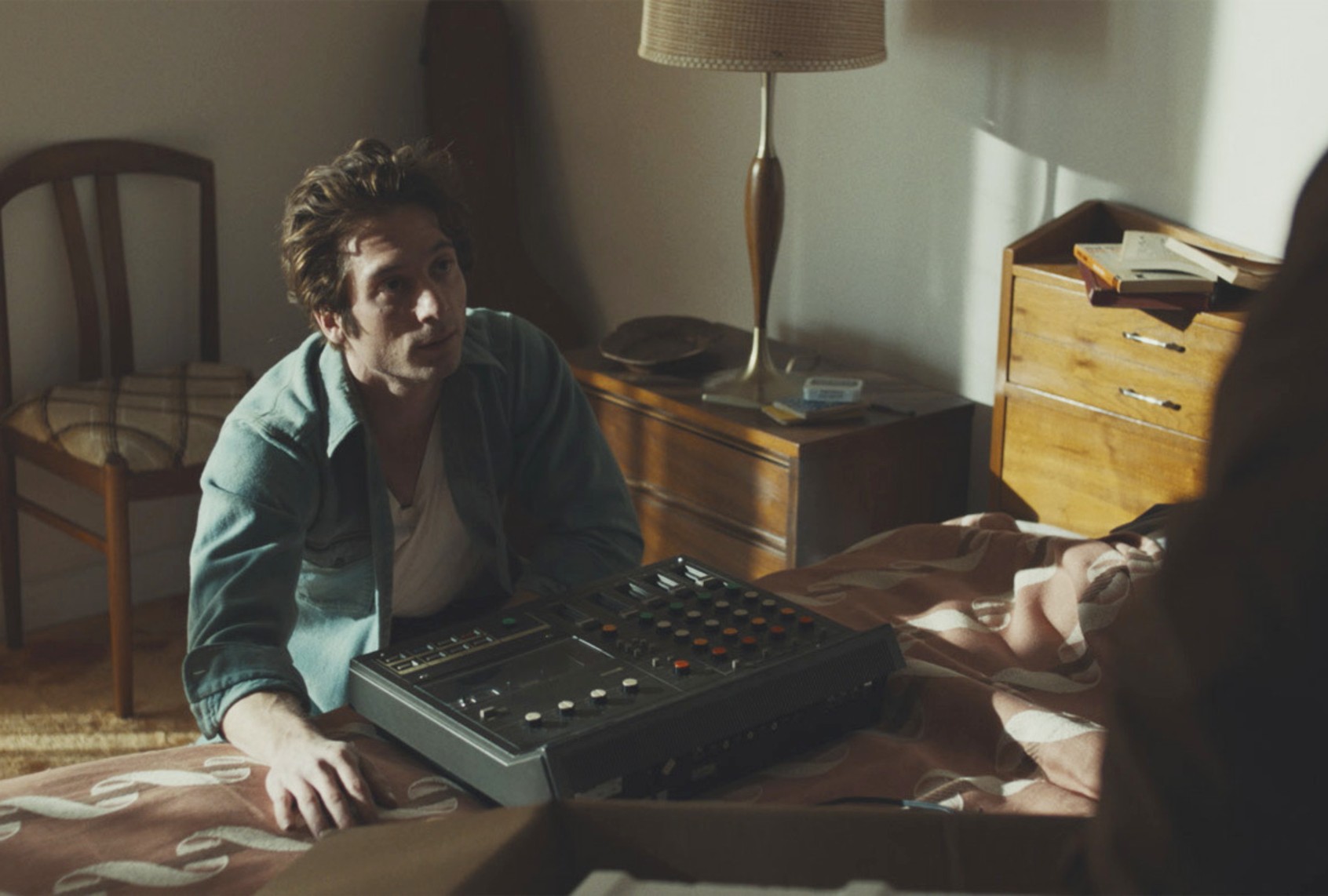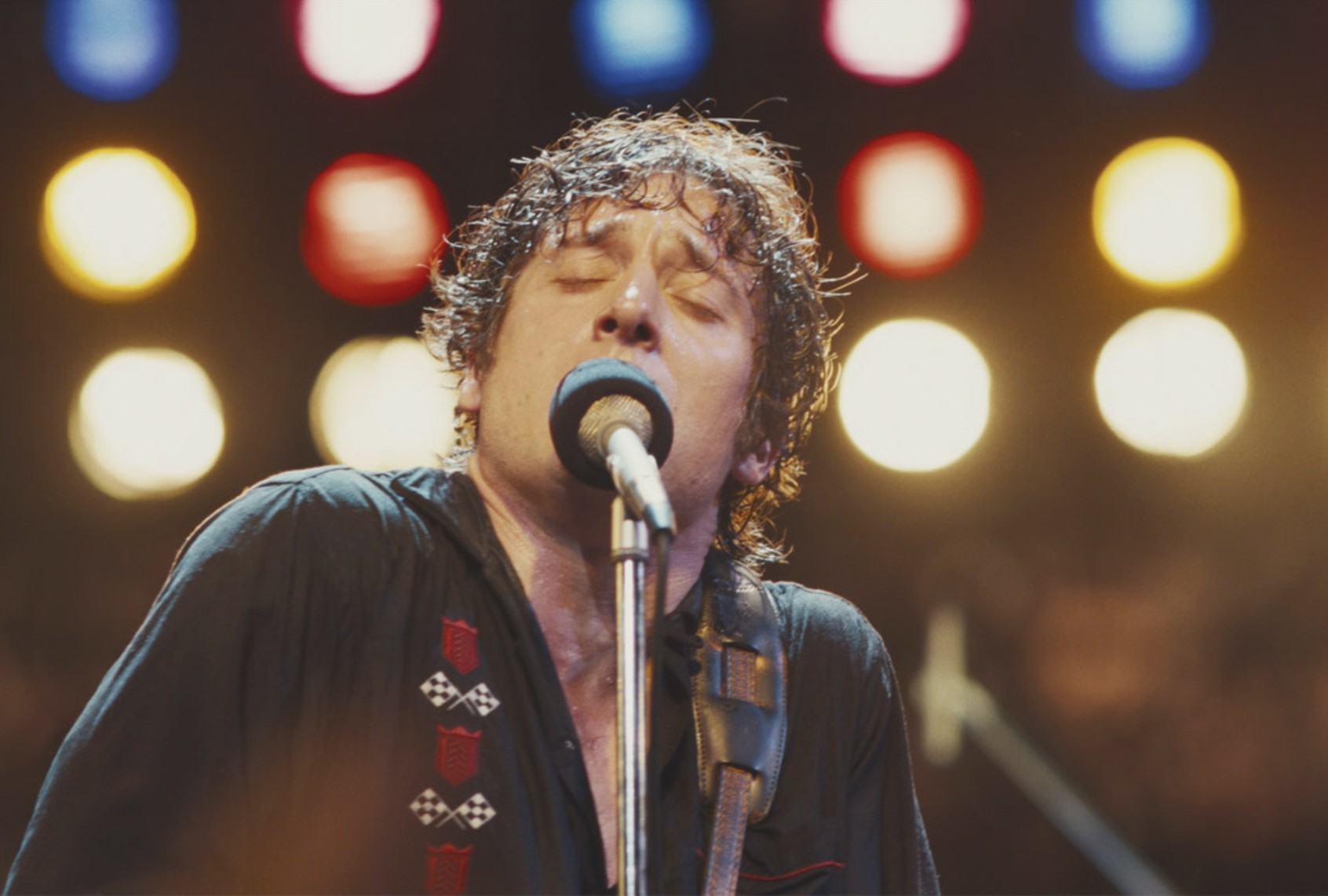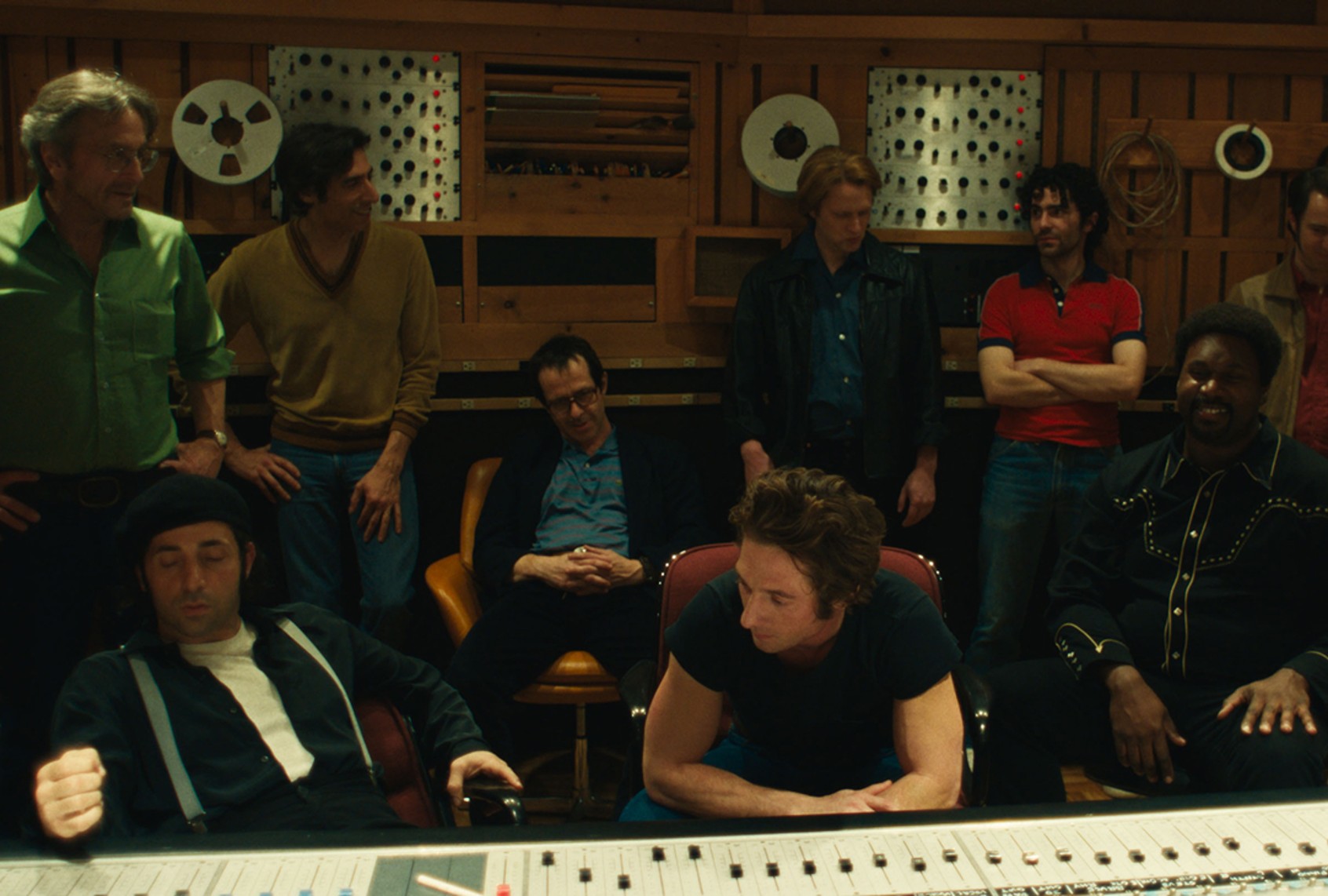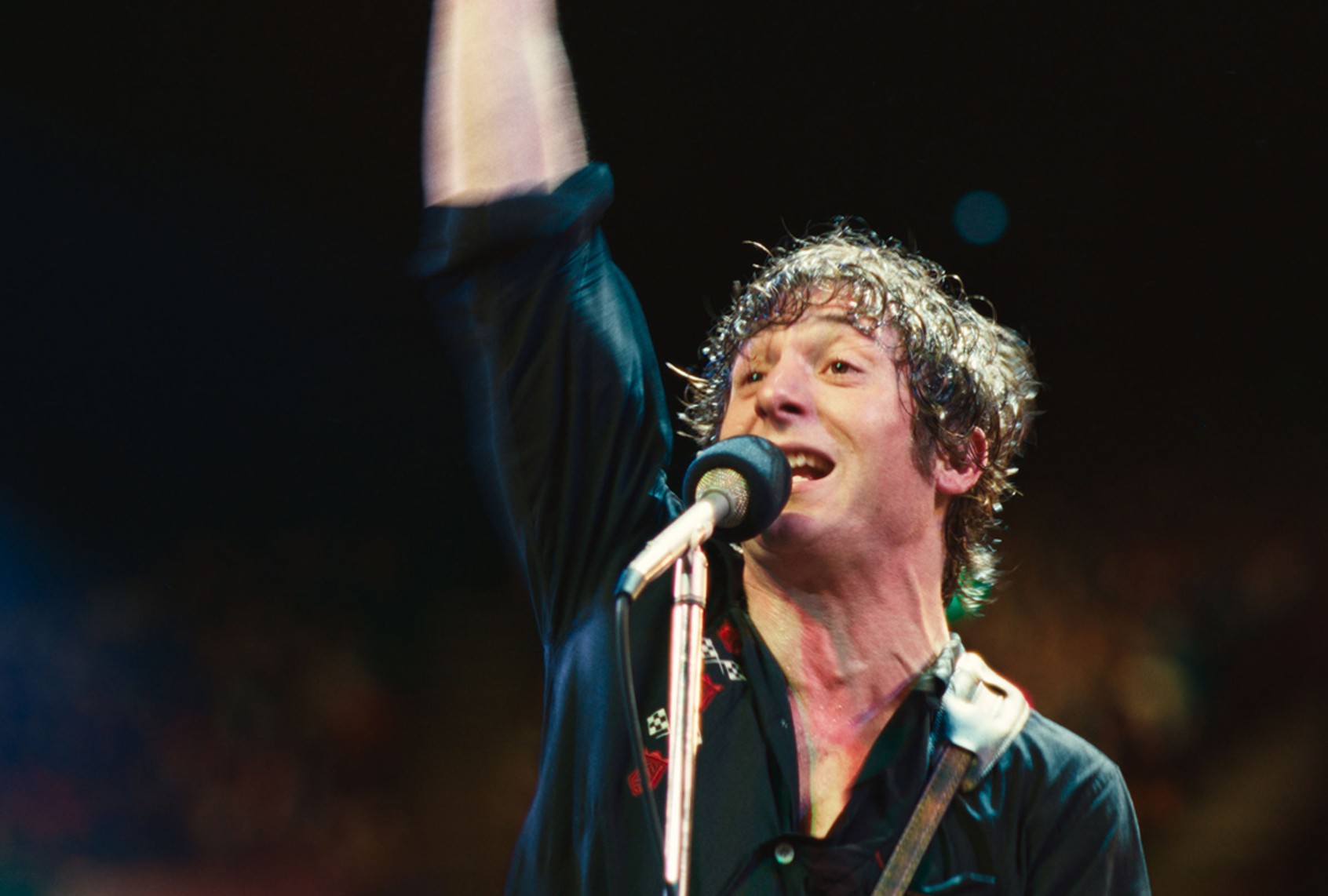When most people think “Bruce Springsteen,” the image that likely springs to mind for the average person is the Springsteen from 1984/5, at the height of “Born in the USA”’s stratospheric success, a guy in blue jeans and a white T-shirt with a bandanna around his head performing non-stop hits in front of a massive stadium crowd.
That Bruce Springsteen wouldn’t have existed without the one we meet in the new biopic from director Scott Cooper, “Springsteen: Deliver Me from Nowhere,” released October 24. Almost everything that Bruce — portrayed by Jeremy Allen White of “The Bear” fame — goes through is a reasonably accurate account of what actually happened in this era, when Springsteen was wrestling with the fame he worked so hard to pursue, and needing to decide whether or not he wanted to follow what he’d later refer to as “the big road.”
That dedication to the truth, while admirable, does not automatically imply that “Deliver Me from Nowhere” is a great film. It is a decent biopic with some interesting moments and several very strong performances. But you walk out underwhelmed, which is not an adjective that generally applies to anything Bruce Springsteen does.
Most people — even if they like Bruce Springsteen — do not know all of the lore around the making of the “Nebraska” album, the record that came after “The River” and before “Born in the USA.” So for many people, it might be the first time that they’re learning that the “Nebraska” album derived from a Maxell XL II 90 cassette tape of demos recorded by Springsteen in his bedroom. It wasn’t supposed to be the record; it was simply a way for Springsteen to save time and money by not spending time writing songs in the studio, and instead arriving prepared with rough drafts to teach to the E Street Band.
Of course, there’s more to it than that. The film brings you into Springsteen’s life, coming off the road after touring “The River” for a little over a year. He’s living in a delightfully ’70s midcentury modern house in Colts Neck, NJ, on the edge of a reservoir. It’s quiet and peaceful, but Springsteen is having trouble coming down from touring life. He’s reading Flannery O’Connor and watching movies (like Terence Malik’s “Badlands”), and he’s also making guest appearances with local Jersey Shore bands on the club circuit, most notably Cats On a Smooth Surface. (For some reason, this version of Cats looks like the Marshall Tucker Band. It was the ’80s, not the ’70s!)
Writing is a solitary pursuit, and there are only so many shots of White playing his guitar and singing or holding his guitar and writing in his notebook that you can show.
At the same time, Springsteen’s writing songs, which we watch in the film as the Boss composes incredibly clean drafts with no misspellings, crossed-out words or other revisions, in a lined spiral notebook — which is how, to this day, Springsteen does his songwriting — except in the movie he’s using a fine felt-tip marker and it probably looks better on camera than the ballpoint pen Springsteen favors. It’s a small thing, except it’s not. (A small thing that is excellent is Springsteen turning on the radio in his new Z28 and hearing a commercial for Action Park, a local water park that was so unsafe that they later made a documentary about it.)

(20th Century Studios) Jeremy Allen White as Bruce Springsteen in “Springsteen: Deliver Me from Nowhere”
Writing is a solitary pursuit, and there are only so many shots of White playing his guitar and singing or holding his guitar and writing in his notebook that you can show. There are also black and white flashbacks to his childhood, and so we come to understand that this is the impetus behind the dark tone of the material Springsteen is writing. This is how we meet mom Adele and father Doug.
The Springsteen parents, as portrayed here, are very two-dimensional, and while Doug Springsteen’s role as the bad guy is fully established, Adele is minimized into a role that doesn’t conform to anything that Springsteen has ever written about her. She was the breadwinner! She had a job as a legal secretary! She figured out how to buy his first guitar. The two of them would dance to pop songs on the radio. There is one dance interlude, but it’s at the end, and it’s over a Sam Cooke gospel tune.
The inconsistencies start to add up, especially if you read Springsteen’s New York Times best-selling memoir or watched the Netflix special of his one-man Broadway show, where many of these stories are told. The point is that they aren’t arcana that’s only known to the most devoted of Boss fans, so the dissonance between what the audience knows and what they’re being told will have an impact.
Start your day with essential news from Salon.
Sign up for our free morning newsletter, Crash Course.
Jeremy Allen White is fantastic as Bruce Springsteen, especially in his physicality and even his singing voice. He doesn’t even have a band to hide behind in the songwriting scenes, and he acquits himself more than admirably. The scene in the diner with Jon Landau (ably portrayed by Jeremy Strong), where White has his arm hooked over the back of the booth, is a very familiar posture. His gait, his stance — whatever White’s process was to get there, it was worth it. The result is that nothing jarring is pulling the viewer out of the story because something as basic as posture or a gesture is so far off base it’s not believable. Also, the hair stylist deserves an Oscar for White’s fantastic approximation of Springsteen’s early ’80’s hair.
Where White is not entirely believable is onstage, and that is the one place where Bruce Springsteen is (by his own admission) the most himself, particularly in that time period. It’s a little better when he’s onstage at the Stone Pony (yes, it is the actual Pony in Asbury Park), but that probably has to do with the fact that in those scenes, he’s playing with actual musicians. (Members of Greta Van Fleet, among others.)

(20th Century Studios) Jeremy Allen White as Bruce Springsteen in “Springsteen: Deliver Me from Nowhere”
Also, no Bruce Springsteen audience, either here in the States or in Europe, was ever as energetic as the crowds are in this film. The entire arena is jumping up and down and waving their arms in the air like Disney cast members. The crowd at the Pony is slightly more believable, probably because it was a smaller space to fill. It is hard to get live music right in fiction, and not every actor or director is going to be skilled at it, but that seems unfortunate given the subject matter of this film.
Where White is not entirely believable is onstage, and that is the one place where Bruce Springsteen is (by his own admission) the most himself, particularly in that time period.
While we’re talking about musicians, let’s discuss the actors who play the E Street Band in those few minutes they are visible. Steve Van Zandt is the most accurate, with the right expressions and headgear (this was his beret era); drummer Max Weinberg is fine; keyboardist Roy Bittan is acceptable. But bassist Garry Tallent never smiled that much, and Springsteen’s onstage foil, the Big Man, Clarence Clemons, was never awkward or gangly the way he is portrayed here; the man was elegance personified. Organist Danny Federici appears for like five seconds in one scene in the studio, at a distance; his nickname was “the Phantom,” so that seems appropriate.
But the work of making a record is boring and repetitive, and it’s hard to make that interesting for a movie. We see the E Street Band in the studio once, where they perform “Born in the USA” as the world knows it. But that was the ninth take of the song, and it’s incredibly different from what was on the Colts Neck demo tape. We’re sort of told that the E Street Band weren’t able to transform the songs in the way both Springsteen and Landau had envisioned — the mythological “Electric Nebraska” — but the audience doesn’t get to reach that conclusion on their own, or come along with the characters as they reach that realization. For that, you’ll have to pick up a copy of the “Nebraska ‘82 – Expanded Edition” box set, released on October 24. (More on that below.)
And while it’s true that New Jerseyans spend a great deal of time in diners (especially in the ’70s and ’80s), it feels like Bruce Springsteen and Jon Landau spend a lot of time talking in diners and almost none of these conversations actually advance the plot. There’s one scene where Landau reminds Springsteen that there’s an upcoming session with Donna Summer and that the Tonight Show keeps calling — but that he, Landau, is there to protect Springsteen if it’s all too much. It’s probably how the film is trying to show us how much pressure Springsteen is under, but it all feels too forced.
We need your help to stay independent
There is also a love interest, named Faye (played by Odessa Young), whom Springsteen meets at the Stone Pony. That is a thing that actually could, and did, happen. But this particular situation stretches one’s credulity to the brink. Faye is the sister of someone Bruce went to high school with, and she’s a single mom and a waitress, and she also likes punk rock and she’s gorgeous — oh, and she also plays chess in her spare time, and happens to live on a dead-end street adjacent to two oil tanks? This is a character in a song written by someone badly trying to be Bruce Springsteen.
While it’s true that New Jerseyans spend a great deal of time in diners (especially in the ’70s and ’80s), it feels like Bruce Springsteen and Jon Landau spend a lot of time talking in diners and almost none of these conversations actually advance the plot.
There’s too much time devoted to the love story, and it does not advance or illuminate the core narrative, except to let the film build to the point where Springsteen inevitably ghosts Faye and she gives a speech about how he’s running away from what he’s scared of. It is simply too much of a storyline that wasn’t at all accurate at the expense of the story about the music.
After trial and error, including more scenes of Springsteen dramatically telling Landau how important these songs are to him, they finally manage to get the tape mastered. Landau has told Columbia Records about the new record, and prepared them for a release for which there would be no singles, no tour, and no press, and the artist did not want his photo on the cover.
Just when there should be some sense of triumph or celebration — the album would eventually, despite all of the above, reach #3 on the album chart — the film cuts to Springsteen’s cross-country road trip as he decamps from New Jersey for California, accompanied by his good friend, Matt Delia. This journey is a central point in Springsteen’s 2016 memoir, “Born to Run,” so while it is, again, accurate, you start to wonder how the film is going to end. Even if you’re a fan who is well-versed in this biographical information, it’s unclear why things couldn’t have wrapped up on the East Coast.

(20th Century Studios) “Springsteen: Deliver Me from Nowhere”
Mid-trip, when they stop at a local carnival, Springsteen has a mental crisis. But as the Boss explains in his memoir, Delia is also going through his own turmoil, and the two of them kind of comically bounce off each other’s misery. But in the film, it’s just Springsteen falling apart. The pair safely reach Los Angeles and Springsteen’s new home in the Hollywood Hills, and Landau helps him find a therapist. The final scene is a reprise of the beginning, showing Springsteen coming offstage after a show and expressing to his manager that it’s good to be back.
He heads for his dressing room, where his parents are waiting for him, and then there’s a stilted and awkward scene with his father. The thing is, Doug Springsteen actually did have that conversation with his son, but (as Springsteen writes in “Born to Run”) it happened the night before his first child was born. It’s not a believable scene, even if you don’t know any of this, and it feels like the director is trying to close a loop that didn’t need resolving. There’s zero catharsis for the audience.
Since the film first played on the festival circuit, there’s been a definite narrative put forth that because Springsteen and manager Jon Landau were so involved in the film and are out doing promo, that means that fans and the Springsteen-friendly should automatically be supportive of the film. Except it doesn’t work that way; if you want the accolades, you need to earn them.
And this is where the film falls down on its promise the most. At the end of two hours, let the audience share in the triumph and the celebration. This would have been the time to pull out live footage of Bruce Springsteen and the E Street Band onstage in all their glory, because that is how the story actually ends — or rather, continues on to this very day. Instead, we have to settle for a live version of “Atlantic City” as performed by the band (from the “Live in New York City” album) as the credits roll. If you’re lucky and the volume’s loud enough in your particular theater, there’s at least a vague sense of closure. This story deserved way more than that.
There are three different perspectives on an artist’s legacy. First is the perspective of the fans, whose viewpoint is both generational and tied to what album or song first ignited their fandom. It can be influenced by the artist or the media, but it can’t be forced in any direction. Then there’s the perspective of music writers and cultural critics, who don’t have the same emotional attachment (or work at separating the two worlds) and have the ability to switch from a micro view to a macro view, to place the artist within a historical context. There may be some crossover between those two worlds. Then there’s the artist’s own view of their legacy, which might align with the first two in some places, but in most cases operates independently and via considerations that may or may not be widely known.
Since the film first played on the festival circuit, there’s been a definite narrative put forth that because Springsteen and manager Jon Landau were so involved in the film and are out doing promo, that means that fans and the Springsteen-friendly should automatically be supportive of the film. Except it doesn’t work that way; if you want the accolades, you need to earn them.
If you walk out of “Deliver Me from Nowhere” and think, “You know, I would like to hear the record that came from the cassette that Bruce Springsteen carried around in his pocket,” you’ll have to go on streaming services or go to a record store to buy a CD of “Nebraska.” The product being released to tie in with the film is the aforementioned “Nebraska ‘82 – Expanded Edition.”
This 4 CD box set gives you a newly remastered version of “Nebraska,” a CD of outtakes, the much-awaited “Electric Nebraska,” and a Blu-ray of a new performance film featuring a solo acoustic performance of the entire “Nebraska” album from start to finish. This is a product for a Springsteen diehard, and not someone who just discovered this whole story thanks to the film and would like to learn more.
Highlights of the outtakes include early versions of “Born in the USA” and “Downbound Train,” both radically different versions from what was eventually released. “On the Prowl” eventually became “Downbound Train.” And “A Gun in Every Home” is quietly subversive. “Electric Nebraska” is a fascinating relic that proves that Springsteen’s insistence on going out with the original demo cassette was the right choice, because the E Street Band does not improve these songs one iota in these recordings.
And while the film of the solo performance of “Nebraska” is beautifully shot and well-performed, it doesn’t feel like the performance actually adds anything to one’s understanding of the record, or at least not enough to add to the price of this box set. This could have been a double CD featuring the outtakes and Electric “Nebraska.” Add the 2025 remaster as a standalone release and there’s something for everyone. That’s how you reinforce a legacy.
Read more
from music columnist Caryn Rose


